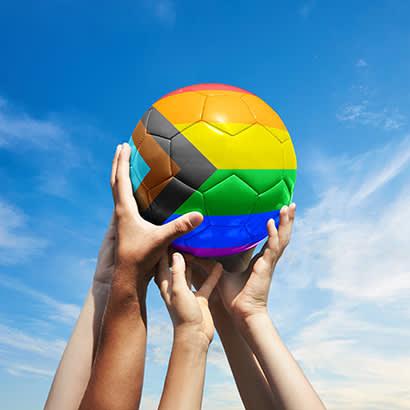Understanding the Complex Debate on Transgender Athletes in Sports
Growing Concerns and Public Discourse on Transgender Participation in Athletics
In recent years, the participation of transgender athletes in competitive sports has become a highly charged topic across the United States, sparking intense discussions among lawmakers, sports authorities, and the general public. This surge in debate is largely fueled by concerns over fairness, particularly regarding transgender women competing in female divisions and the potential physiological advantages they may possess. While opponents emphasize maintaining competitive equity, advocates stress the importance of honoring gender identity and fostering inclusivity. These debates are unfolding at every level‚ÄĒfrom youth leagues to professional sports‚ÄĒprompting legislative actions and policy revisions nationwide.
Several key elements contribute to the ongoing controversy:
- Divergent eligibility criteria and hormone treatment requirements across sports organizations
- Conflicting scientific research influencing policy decisions
- Media focus on high-profile cases that amplify cultural tensions
- Political groups utilizing the issue to galvanize supporters
| Group | Viewpoint | Primary Concern |
|---|---|---|
| Sports Authorities | Striving for fairness while promoting inclusion | Consistency in regulations |
| Transgender Competitors | Access to equal competitive opportunities | Respect for gender identity |
| Opponents | Preserving competitive fairness | Concerns over physical advantages |
| Advocacy Organizations | Defending civil liberties | Preventing discrimination |
Balancing Equity and Inclusion Within Sports Communities
The intersection of fairness and inclusivity in sports presents a multifaceted challenge. Critics often point to inherent biological differences as a basis for restricting transgender athletes’ participation, fearing these disparities could affect competition outcomes. Conversely, proponents argue that exclusionary measures marginalize transgender individuals and contradict the foundational principles of sportsmanship, which include respect and equal opportunity. The debate underscores the need for sophisticated policies that honor both competitive integrity and human dignity, moving beyond rigid gender binaries to embrace a spectrum of identities.
Important factors to consider when addressing fairness and inclusion:
- Physiological considerations and hormone treatment protocols
- Mental health and the sense of belonging among athletes
- Uniformity of inclusion policies across different sports
- Effects on youth engagement and athletic development
| Dimension | Potential Consequence | Community Feedback |
|---|---|---|
| Gender Divisions | Challenges traditional male/female categories | Calls for more inclusive or non-binary classifications |
| Policy Application | Varies significantly among organizations | Advocacy for standardized, transparent rules |
| Athlete Participation | Visibility and representation of transgender athletes fluctuate | Initiatives to boost diverse athlete involvement |
Insights from Experts on Harmonizing Rights and Competitive Fairness
Prominent scholars and practitioners in sports ethics and human rights advocate for carefully crafted policies that balance inclusivity with fair competition. Dr. Elaine Morrison, a renowned sports ethicist, emphasizes that blanket prohibitions fail to capture the nuanced physiological and social realities of transgender athletes. She recommends collaborative policy development involving medical professionals, athletes, and civil rights experts to create eligibility standards that are both just and affirming. Morrison states, ‚ÄúThe goal is to design rules that acknowledge diverse experiences without compromising the spirit of competition.‚ÄĚ
Experts focused on maintaining competitive integrity stress the importance of a level playing field but warn that exclusionary practices can erode the fairness they aim to protect. Recent research analyzing athletic performance throughout hormone transition phases suggests that individualized evaluations may offer a more equitable approach than broad categorical bans. The emerging expert consensus includes:
- Adopting inclusive policies grounded in scientific data rather than assumptions
- Regularly updating guidelines to reflect new research findings
- Ensuring transparency in policy formulation to build trust
- Providing support systems for athletes navigating identity and competition challenges
| Method | Focus Area | Effect |
|---|---|---|
| Hormonal Monitoring | Biological indicators | Aligns eligibility with physiological status |
| Individualized Review | Personal circumstances | Encourages fairness and nuanced decisions |
| Stakeholder Involvement | Voices of athletes and communities | Strengthens policy acceptance |
Strategic Policy Approaches for Inclusive and Fair Sports Settings
Creating sports environments that are both inclusive and equitable requires policymakers to move past fear-based rhetoric and ground decisions in robust evidence and best practices. The following strategies are essential:
- Enact comprehensive anti-discrimination laws explicitly safeguarding transgender athletes
- Formulate clear, transparent participation guidelines developed collaboratively with medical experts, athletes, and human rights advocates
- Implement educational initiatives to combat stigma and misinformation about transgender inclusion
- Provide accessible mental health support tailored to the needs of marginalized athletes
Achieving equity in sports demands a delicate balance between fairness and respect, ensuring no group is unfairly excluded or advantaged. A flexible framework that incorporates regular policy reviews and active community engagement can foster resilience and trust. The table below outlines a comprehensive policy framework:
| Policy Component | Objective | Implementation Steps |
|---|---|---|
| Inclusion Criteria | Safeguard athlete rights | Anti-discrimination policies, accessible grievance procedures |
| Scientific Collaboration | Maintain fairness and safety | Partnerships with medical experts, evidence-based protocols |
| Community Outreach | Enhance awareness and trust | Public forums, athlete engagement programs |
Looking Ahead: Navigating the Future of Transgender Inclusion in Sports
The conversation surrounding transgender athletes’ participation in sports is far from settled, reflecting deep questions about fairness, identity, and inclusion. Coverage from outlets like The Washington Post underscores the diverse viewpoints and emotional complexities involved. Moving forward, it is imperative that policymakers, athletes, and communities engage in thoughtful, respectful dialogue to craft solutions that honor all participants. The evolving nature of this debate will significantly influence the future of sports culture and policy in the United States.







